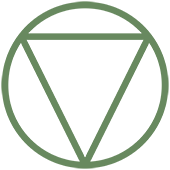This lockdown period is the perfect opportunity to bring your self-practice into focus. There have been a huge number of online classes available as many teachers from around the world offer free resources. I have particularly enjoyed Lisa Petersen’s classes broadcast from her home in Dublin as I wouldn’t usually have the opportunity to work with her since I live on the other side of the world! Also Neal Goshal, my friend and colleague is offering beautiful gentle Yoga classes from his living room on Waiheke Island. It is such a treat to be led through intelligent and kindly offered sequences via zoom; the ‘live’-ness of it brings a surprising authenticity.
However, as I often state in my classes on the Contemporary Yoga Teacher Training, the Yoga class format is a modern phenomena based on the western exercise class model and true transformation only really begins to take place when you own and drive your self-practice. Use classes and events, be they online or face to face, as well as books, videos, and other resources as inspiration and fodder for your personal practice where you can really meet your unique needs in the moment. I hope to guide all of my students to this place where they have the confidence and power to practice without the need for someone else’s voice telling them what to do.
During this lockdown time, it is easy to keep connecting via video conferencing technology to the point where the whole day becomes one of interactions through a screen. Your yoga practice is one place where you can come back to being with yourself. During this time it has occurred to me that as Yoga practitioners and teachers we are some of the best prepared people in the world for the lockdown period. Through past practice and learning, attending silent retreats, and yoga trainings etc we have some very apt tools to be present with the situation of isolation.
Of course self-practice can seem an unobtainable habit for many people, including Yoga teachers themselves. But if you have been practicing for a year or two and have an understanding of the basic postures and breathing practices you will have muscle memory and body wisdom that can guide you. For beginners it’s usually best to learn the forms and practices from a teacher or in a class but this reliance can also lead people to think that they don’t know what to do when they are by themselves. Yet, if we frame asana practice as a remembering of body shapes and patterns that come from the journey we have all taken through human development and movement, it is possible to tap into the innate ‘know how’.
One way into a responsive daily practice is to use a weather report to check in and help you make an intention that can guide you into making appropriate choices and sequences in your practice. Another way is to let your body decide for you from a deep belly place. That might sound airy-fairy and the question is how to access an intuitive approach? The suggestion here is to begin your practice with curiosity by allowing your body to briefly inhabit all the main evolutionary or developmental body shapes and postures that you travelled through from being and infant to becoming an upright adult human. This is a beautiful way to begin a practice that I learnt from Donna Farhi. It allows an unfolding that taps into the time you have already put in of accumulating and learning yoga tools and resources even if in a sporadic way in the past.
I have guided this inquiry for my experienced students as well as relative newcomers to yoga and have been amazed at how this process can really connect a person to practicing with confidence and allowing inner perception to rule over knowing the ‘correct’ ways of ‘performing’ an asana or a sequence.
Try it for your self using this 15 minute audio inquiry into an Evolutionary Practice.

